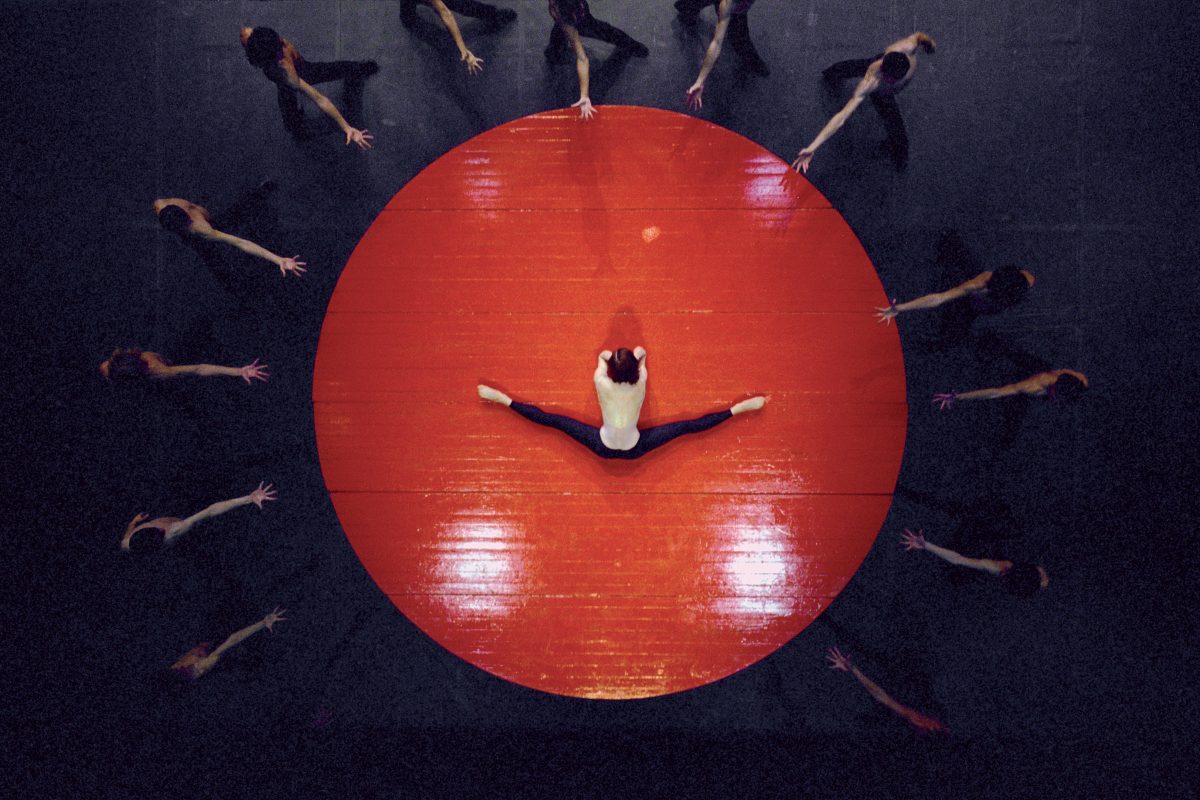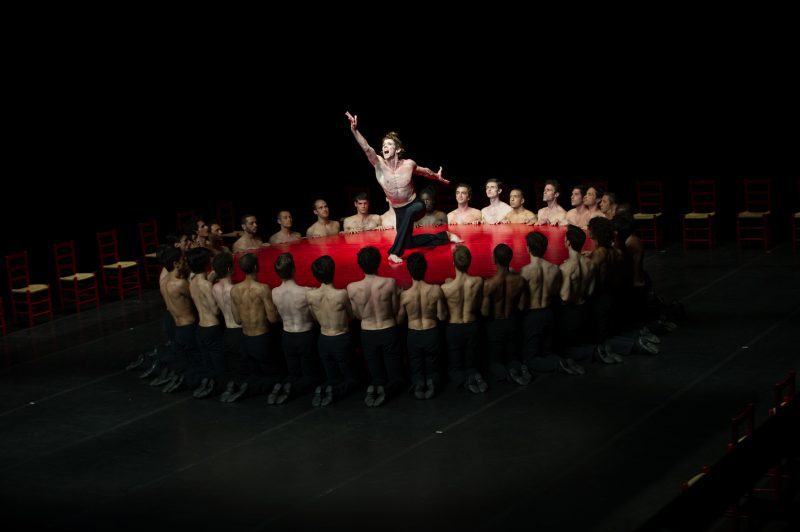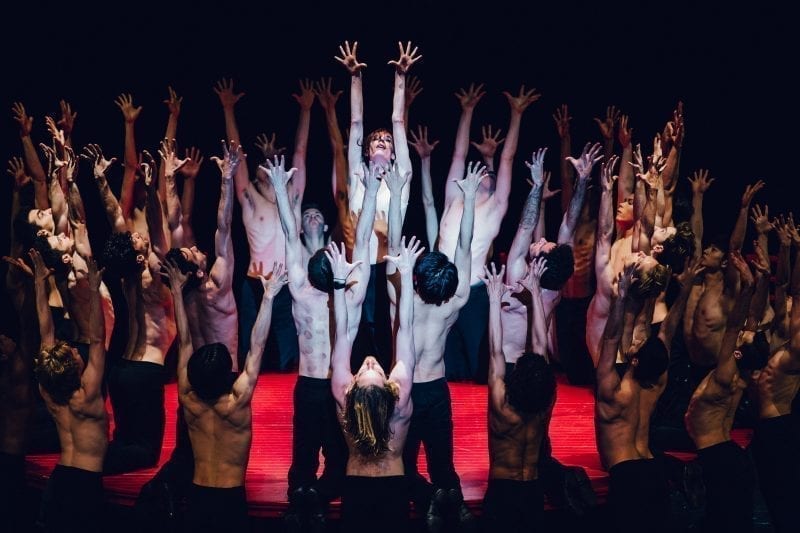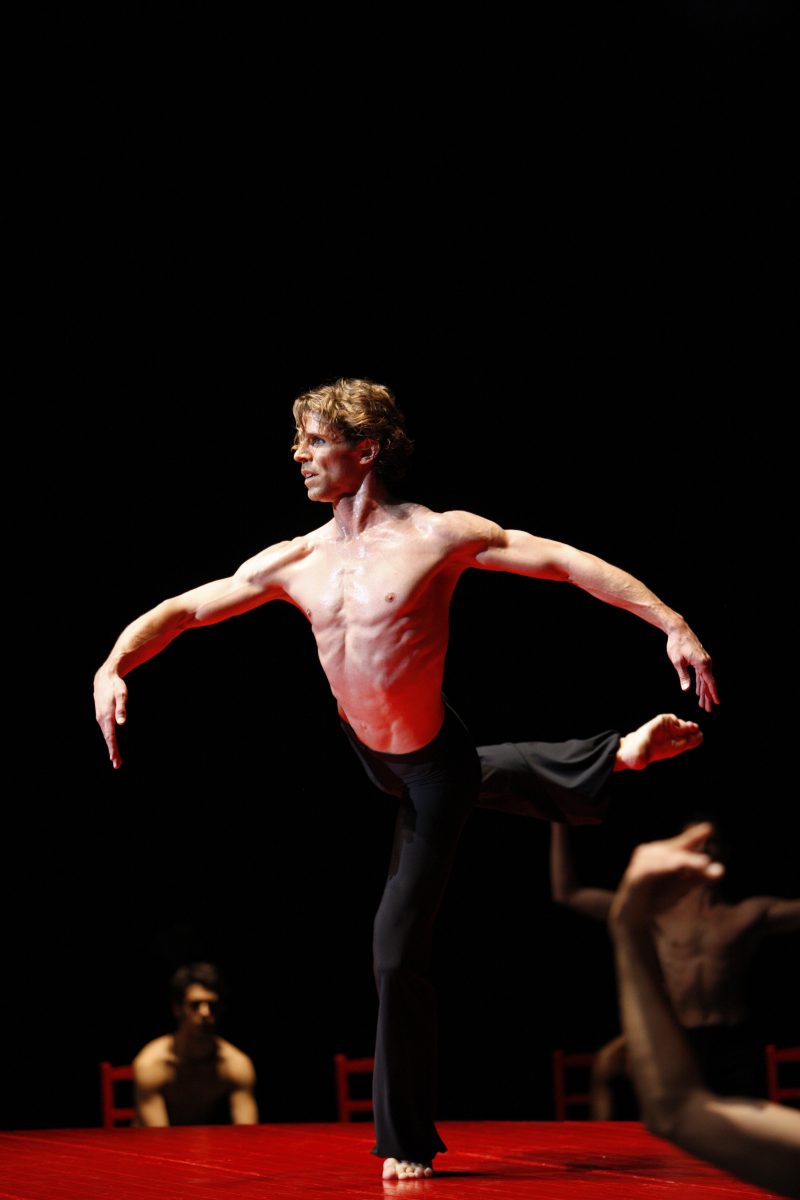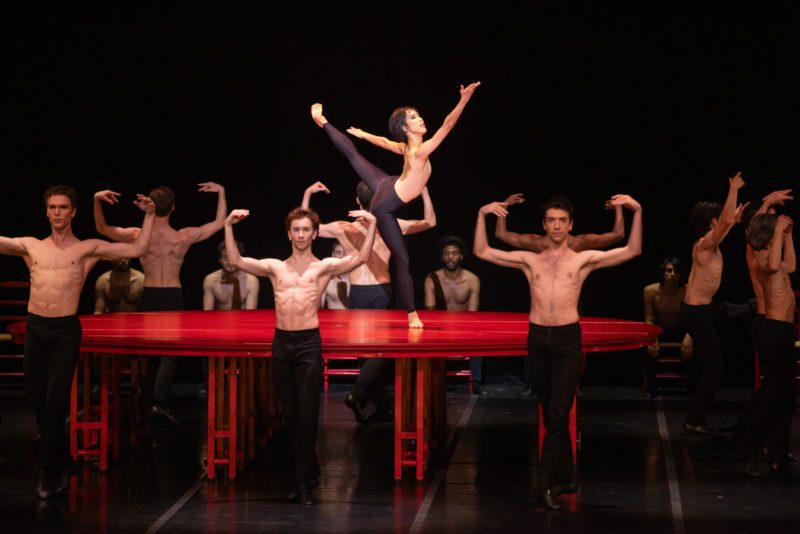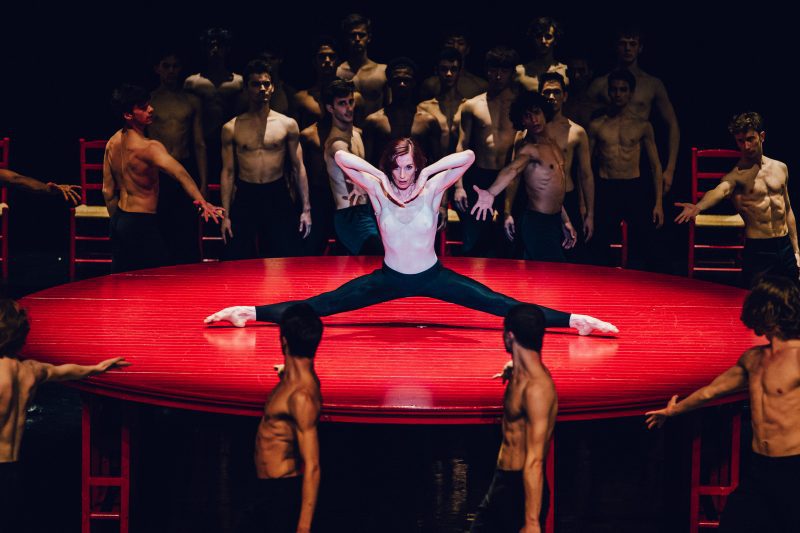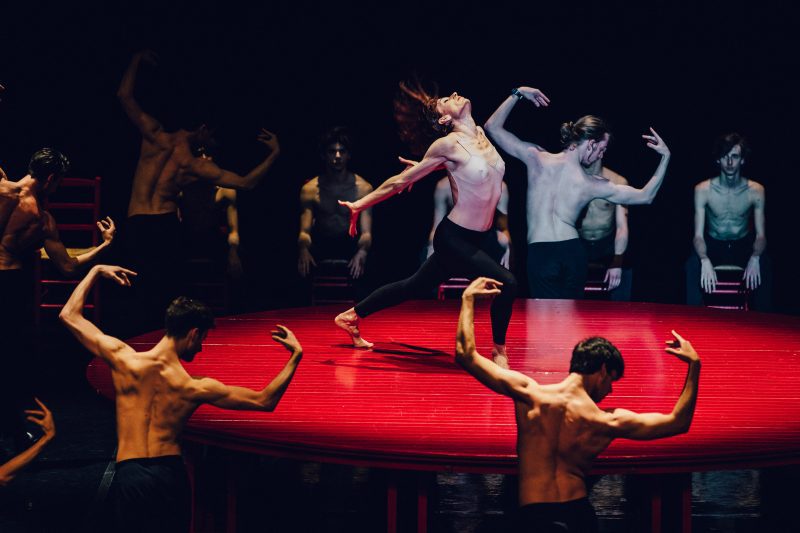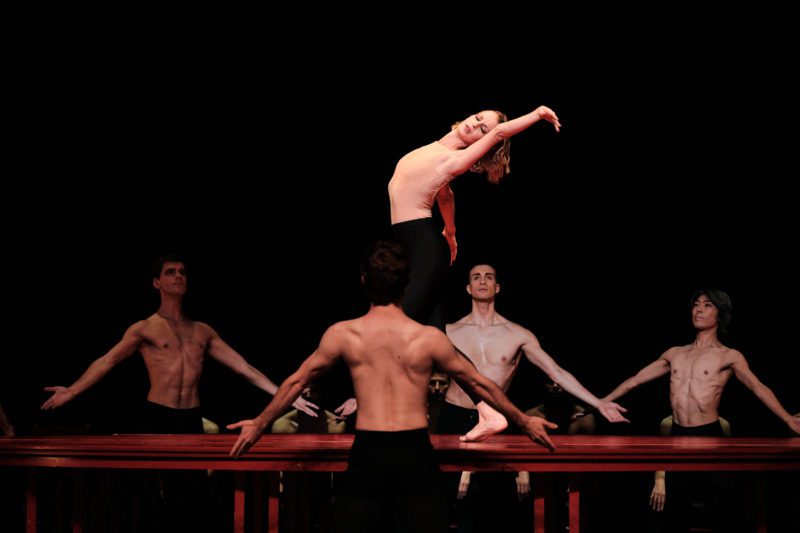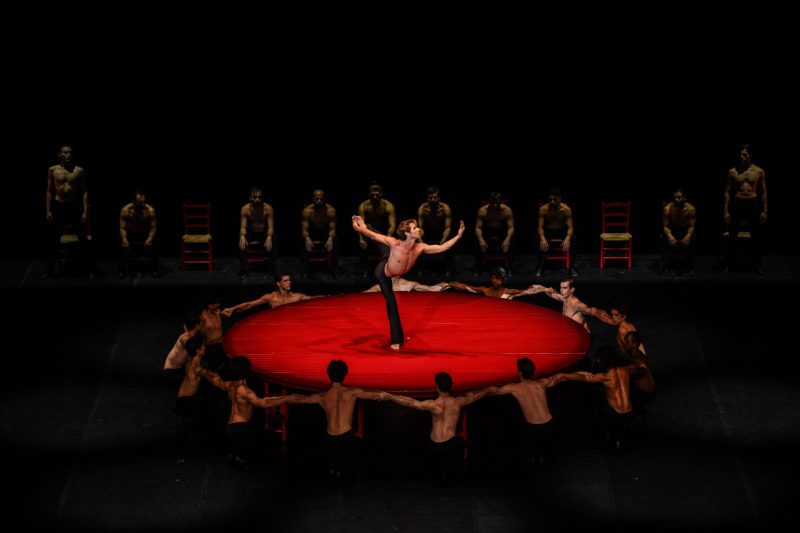“My Boléro,” commented Ravel, “has to stick in one’s head!”
More seriously, he explained:
“In 1928, upon request by Madame Rubinstein (Ida Rubinstein, the famous Russian actress and dancer), I composed a Bolero for an orchestra. This is a dance with a very moderate and continuously even movement, both due to its melody and to its harmony and rhythm. The rhythm is continuously marked by the drum. The element of diversity is added by the orchestral crescendo.”
Maurice Béjart describes the creation of Ravel’s work in these terms, “music that is too well-known and yet still fresh due to its simplicity. A melody (originally oriental and not Spanish) that winds slowly around itself, increasing in volume and intensity, devours the sound space and swallows it up at the end of the melody.”
Without further describing a ballet that needs no introduction, let us simply point out that Maurice Béjart returns to the spirit of the Rite of Spring in a very different style. In this sense, unlike most artists who have illustrated Boléro choreographically before him, he spurns the easy choices of a picturesque exterior to simply – but so forcefully – express the essential.
Maurice Béjart gives the central role (La Mélodie) sometimes to a female dancer and other times to a male dancer. The rhythm is interpreted by a group of male dancers.
RÉFÉRENCES MUSICALES
Maurice Ravel
Album: Boléro, La Valse, Rapsodie Espagnole, Alborada Del Gracioso ; Title: Boléro
Director: Charles Dutoit ; Performers: Orchestre Symphonique de Montréal
Record: DECCA
